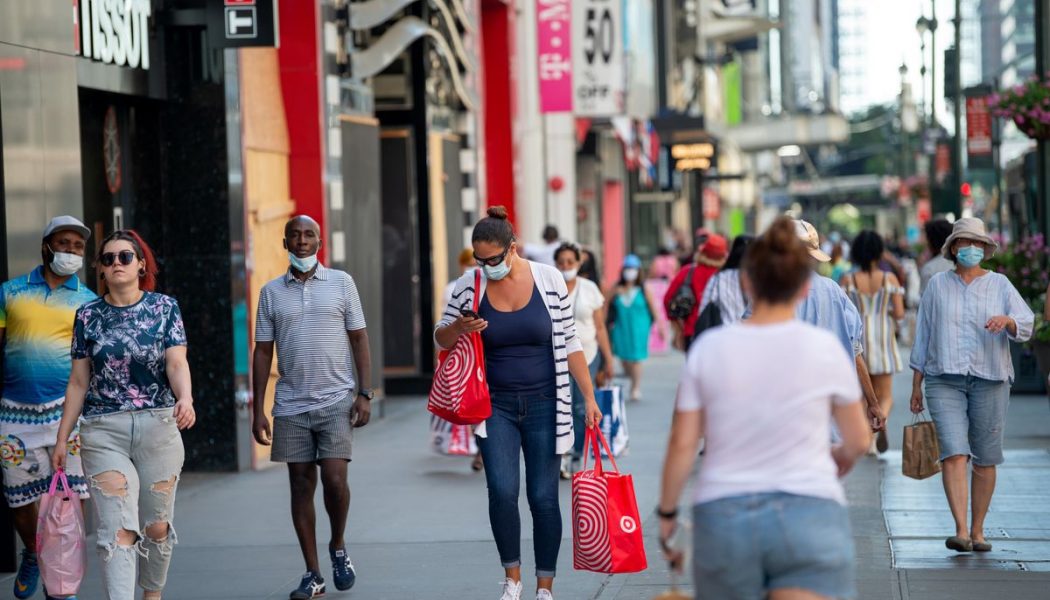You’d think that months of reading about overflowing hospitals and mounting death statistics would scare almost anyone into following the current Centers for Disease Control (CDC) recommendations: wear a mask in public spaces to protect others from possible infection, especially since there is no current way to be sure who may be an asymptomatic transmitter — particularly in relatively crowded urban areas.
However, these days, when I go out for a walk or to run errands, at least half the people I see are not wearing masks — or are wearing their masks around their necks, as though those pieces of cloth or paper are good-luck totems rather than items with a specific purpose.
Admittedly, face masks are not convenient or particularly pleasant to wear. They can be hot on summer days; they can be uncomfortable if not fitted properly; they can make your glasses fog up; they get in the way of eating, drinking, and talking (especially on the phone); and they can muffle your voice and hide your smile.
There are other reasons that people may avoid wearing masks. There are those with breathing difficulties and other valid reasons for avoiding face coverings. There is the political aspect — wearing a mask, or not wearing one, has become a statement in some circles of one’s support of a specific political point of view. There is confusion over the mixed signals we are getting from medical experts and political leaders. There is simple bravado: ‘Nobody is going to tell me what to wear!’ And there is mental fatigue: after several months of dealing with a pandemic, and no end in sight, it’s tempting to just throw up your hands and go about your life.
But what if you feel that people should be wearing masks? How do you deal with the anger — not to mention the possible danger? Should you confront them? I went looking for advice online. I found some — but nothing that would immediately solve the issue.
:no_upscale()/cdn.vox-cdn.com/uploads/chorus_asset/file/20053645/1252249322.jpg.jpg)
Shaming doesn’t work
Julia Marcus, an epidemiologist and professor at Harvard Medical School, says in her article in The Atlantic that shaming people for not wearing masks is counterproductive. She recommends that we follow the example of the organizations that distributed condoms during the AIDS crisis of the 1980s and make disposable masks easily available where they’re most needed — at the front of stores or airports, for example. She also suggests that it might help if we make sure that masks fit well and look, well, cool. (In other words, make people want to wear them.)
In the SF Chronicle, writer Tony Bravo talks to etiquette experts about how — or rather, whether — to confront people who are not wearing masks in stores and other public spaces. It is generally agreed upon among these courtesy mavens that confrontation (besides being possibly dangerous) doesn’t work. Bravo quotes Lizzie Post, the great-great-granddaughter of the famous etiquette expert Emily Post, as saying that it’s best to simply lead by example. “Our brains can want to punish or shame people who aren’t following the rules. That never gets people on your side. The thing you can do is control yourself and do everything you can to protect yourself.”
And don’t assume you know why they’re not wearing masks, points out Aziza Ahmed, a professor who specializes in health law at Northeastern University. There are people with legitimate health reasons for not wearing a mask. Sometimes it’s best to simply ask them to step back if they get too close for comfort.
Perhaps it may help to acknowledge those who do recognize the need for care. On a recent morning, I was walking on a narrow sidewalk and a man who had obviously just finished a jog turned the corner onto my street, his mask around his neck. As soon as he saw me, however, he immediately put the mask in place. As we passed each other, we nodded in recognition of our mutual courtesy, and then went our separate ways.










